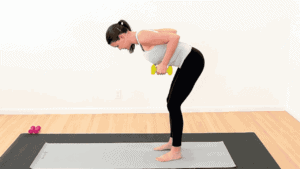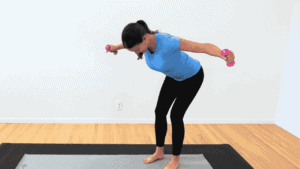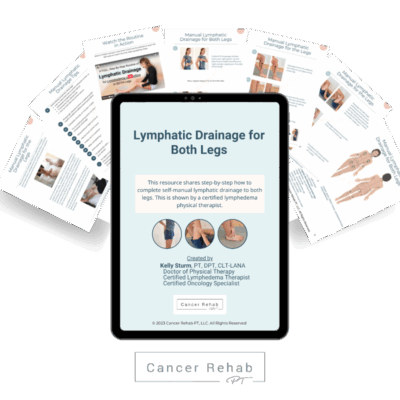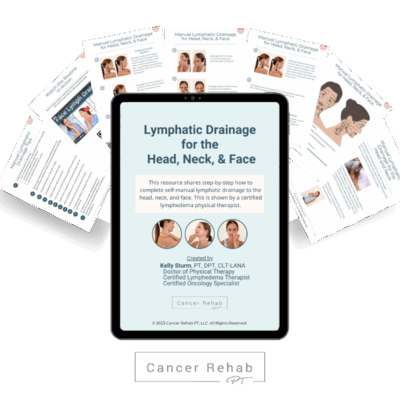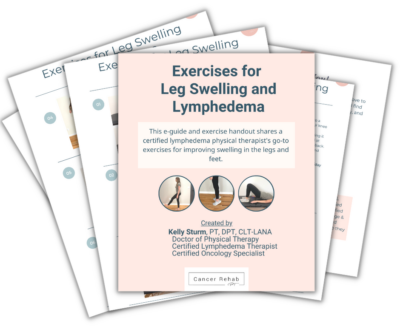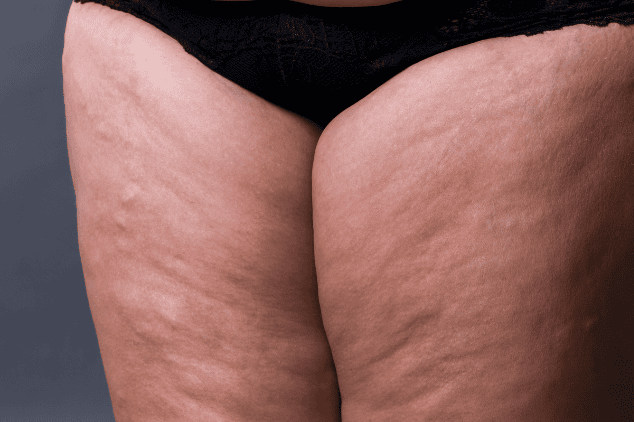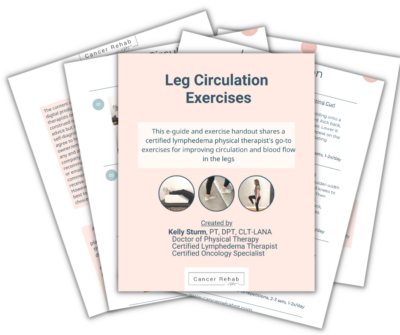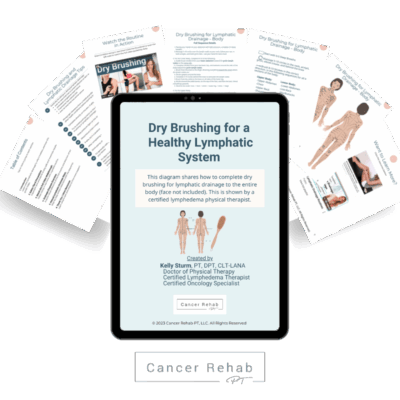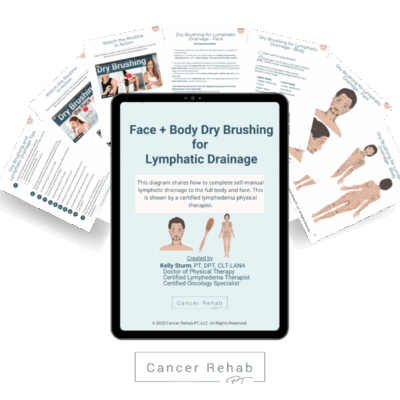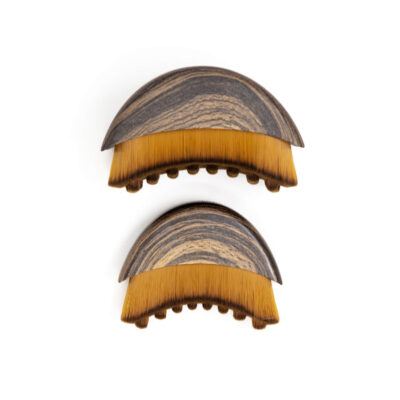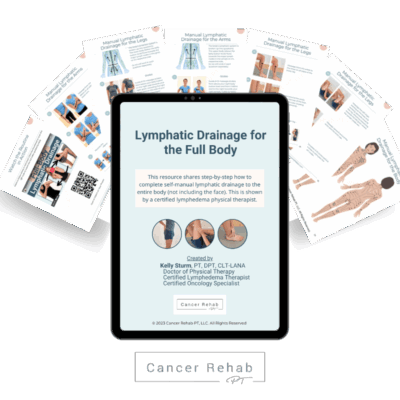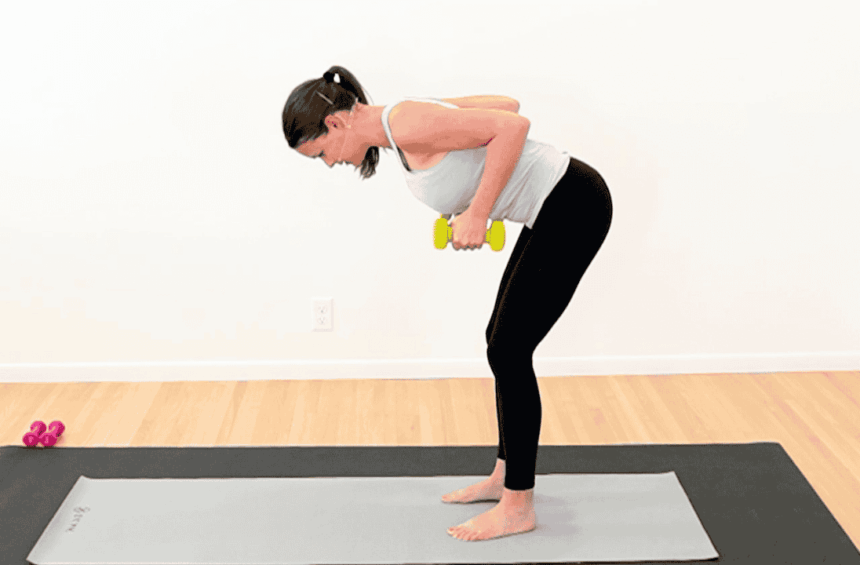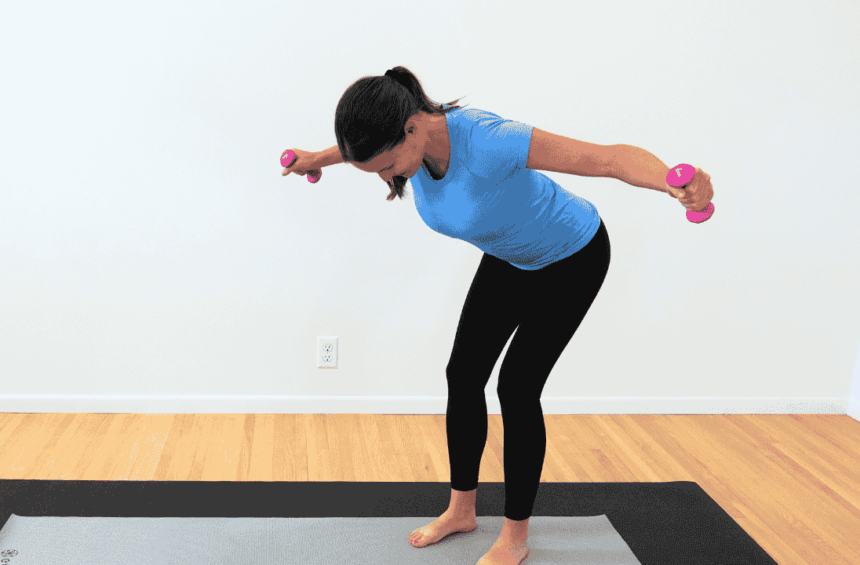Many women notice changes in their legs and wonder if they’re dealing with lipedema vs cellulite. I get questions about this all of the time, and I understand why it can be confusing because these two conditions can look similar at first glance.
It’s important to understand the difference to make sure you get the right care.
Cellulite is a cosmetic concern that affects your skin’s appearance. Lipedema is a medical condition that causes abnormal fat distribution with pain and swelling. It doesn’t have a cure, but proper diagnosis and treatment can help you successfully manage lipedema symptoms.
What Is Lipedema?
Lipedema is a condition where fat cells accumulate abnormally in your lower body, creating symmetrical swelling and pain. Unlike regular fat, lipedema fat doesn’t respond to diet or exercise and primarily affects women.
The fat builds up evenly on both sides of your body, typically around your hips, thighs, and lower legs. One thing that helps us know if someone has lipedema is if it typically stops at your ankles—your feet usually aren’t affected.
My patients with lipedema often experience:
- Pain, tenderness, or aching in affected areas
- Easy bruising
- Heaviness in the legs
- Skin that feels soft but bumpy underneath
- Swelling that gets worse throughout the day
- Difficulty losing weight in affected areas, even with healthy eating and exercise
- Frustration with not being able to lose weight
In my practice, I’ve seen many women live with this condition for years before getting a proper lipedema diagnosis because this disease is often misunderstood, even by healthcare providers.
While doctors don’t know the exact cause of lipedema, we do know that hormones and genetics likely play a role. Lipedema often develops or worsens during hormonal changes like puberty, pregnancy, or menopause.
Also, about 60-80% of people with lipedema have family members with similar symptoms, which suggests a genetic component.
If you’re reading this and thinking, “My mom had legs just like mine,” that could be a helpful clue.
Lipedema Treatment
There’s unfortunately no cure for lipedema, but there are ways to manage it and prevent it from progressing. These options include conservative therapy and surgical treatments.
- Conservative treatments include specialized exercises, compression therapy, and manual lymphatic drainage.
- Surgical options involve specialized liposuction techniques that remove lipedema fat but cause minimal damage to the lymphatic system.
Most insurance companies and medical professionals require you to try conservative treatments first before considering surgery. I know this can feel frustrating when you’re in pain, but I’ve seen many patients get real relief from these treatments.
The good news is that learning these techniques now will help you long-term. Even if you decide on surgery later, you’ll need to continue with compression and lymphatic care to maintain the benefits and keep the lipedema from coming back.
When treating lipedema, you will likely work with different types of doctors and specialists. As a certified lymphedema therapist, I help lipedema patients with Complete Decongestive Therapy (CDT), which includes:
- Manual lymphatic drainage: Gentle, specialized massage techniques that help move fluid out of swollen tissues.
- Compression therapy: Custom-fitted garments or bandaging to prevent fluid buildup.
- Exercise therapy: Movements that support lymphatic flow and reduce pain, such as vibration plate exercises.
- Skin care education: Proper hygiene techniques to prevent infections.
Other healthcare providers who can help include dermatologists, plastic surgeons, phlebologists, physical therapists, and doctors who specialize in lymphatic disorders.
If you’re not sure where to start, I have a few handy guides that can help with lipedema management at home:
What Is Cellulite?
Cellulite is the dimpled, bumpy skin that often appears on thighs, buttocks, hips, and sometimes arms. It looks like orange peel or cottage cheese and happens when fat tissue pushes through the connective tissue just under your skin.
Cellulite affects 80-90% of women, regardless of their weight or fitness level. It’s completely normal and not a medical condition.
Cellulite occurs because of the following factors:
- Hormones
- Genetics
- Age
- Body composition
Since cellulite is purely a cosmetic concern, there’s no medical cellulite treatment that is considered necessary. However, many women don’t like the way it looks, and there are ways that may temporarily reduce it:
- Regular exercise can improve muscle tone and skin texture
- Eating a healthy diet helps you stay at a healthy weight
- Professional treatments like massage, laser therapy, or red light therapy may provide temporary improvement
However, no treatment permanently eliminates cellulite, and most cosmetic procedures show only modest and temporary results.
How Do I Know If I Have Lipedema or Cellulite?
Here are a few key differences between lipedema and cellulite that I tell my patients:
- Location: Lipedema affects both legs equally and usually stops at the ankles, and cellulite can appear anywhere on the body.
- Physical sensations: Lipedema causes pain, tenderness, aching, and easy bruising, and cellulite doesn’t cause any physical discomfort.
- Response to diet and exercise: Lipedema fat doesn’t shrink with weight loss, and cellulite may improve somewhat with exercise and a healthy weight.
- Symmetry: Lipedema is always symmetrical, with both sides looking the same, and cellulite can be uneven or more pronounced on one side.
- Skin texture: Lipedema skin feels soft but has lumps underneath with a “mattress-like” feel, and cellulite has a dimpled appearance on the surface.
If you’re experiencing pain, swelling, and symmetrical fat distribution that doesn’t respond to diet and exercise, it’s worth seeing a healthcare provider who’s familiar with lipedema.
Lipedema vs Cellulite Pinch Test
The pinch test is something you can try at home to help tell the difference.
Gently pinch the skin on your thigh or buttocks between your thumb and fingers. If you see dimpling or a bumpy texture when you pinch, that’s likely cellulite.
When you pinch lipedema tissue, the skin may look smooth on top, but underneath, you’ll feel soft, squishy lumps that don’t create the same dimpled skin as cellulite.
Also, pinching lipedema tissue often causes tenderness or pain. Cellulite typically doesn’t hurt at all.
However, keep in mind that sometimes people have both lipedema and cellulite, so ultimately, the best way to diagnose lipedema is to see a medical professional who understands these conditions.
Lipedema vs Cellulite Pictures
Here’s what cellulite and lipedema look like (lipedema on the left, cellulite on the right):
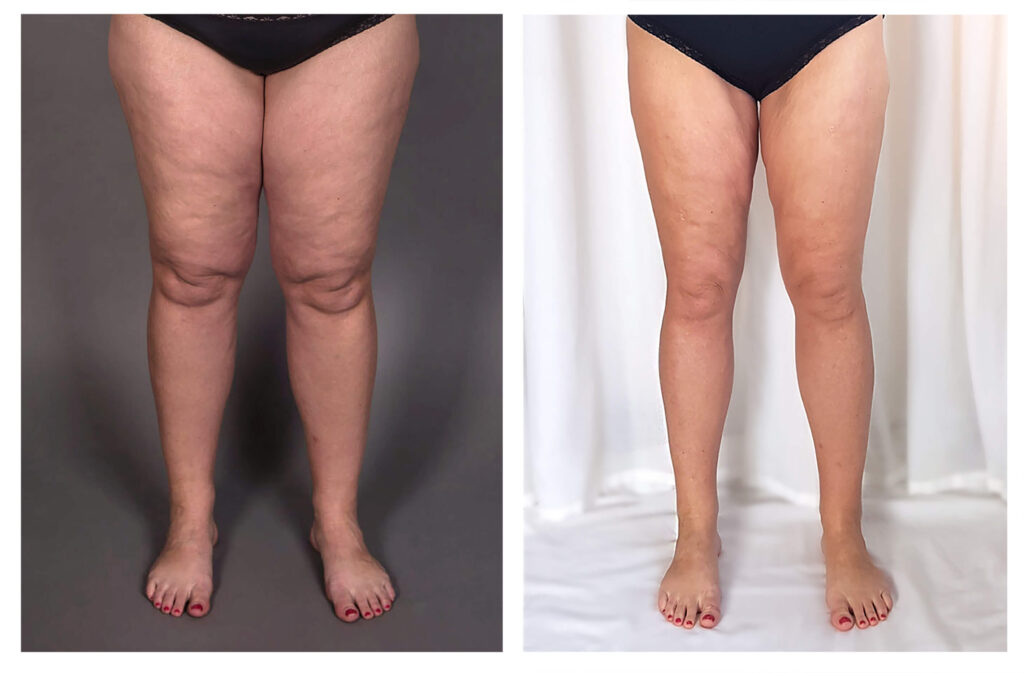
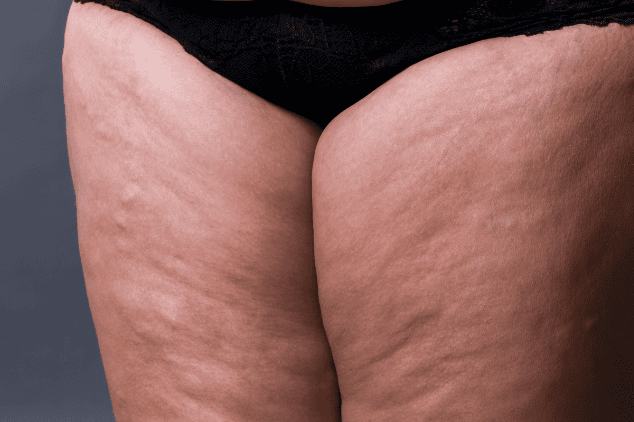
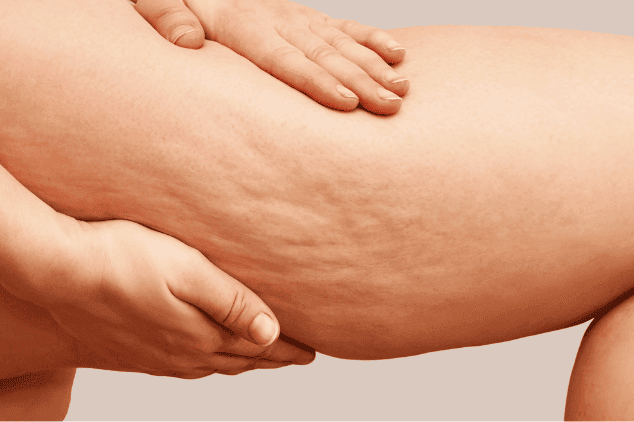
Lymphedema vs Lipedema vs Cellulite
Lymphedema is a third condition that I often see confused with lipedema and cellulite. It happens when your lymphatic system gets damaged or blocked, which causes swelling that feels heavy and tight.
Lymphedema usually affects one arm or leg, feels hard when pressed, and often develops after cancer treatment.
In advanced lipedema, the large amounts of abnormal fat can put so much pressure on your lymphatic system that lymphedema develops, too. This combination is called lipo-lymphedema, and it requires specialized treatment for both conditions.
In my practice, if someone has symptoms of lipedema, I always emphasize how important it is to start taking care of their lymphatic system early to prevent complications down the road.
For example, dry brushing can be very helpful and is something many of my patients find beneficial. If you’re not sure where to start, you can try some of these guides:
FAQs
Can You Reverse Lipedema?
No, lipedema unfortunately can’t be reversed or cured. However, early treatment can slow progression and improve your symptoms a lot. Conservative treatments like compression therapy and manual lymphatic drainage help manage pain and swelling, and surgical liposuction can remove lipedema fat (although some of it may return over time).
Does Cellulite Hurt When Pressed?
No, cellulite doesn’t hurt when pressed or touched. If pressing on dimpled skin causes pain or tenderness, you may be dealing with lipedema rather than cellulite. It’s also possible to have both lipedema and cellulite.
Can Lipedema Go Away with Weight Loss?
No, lipedema fat doesn’t respond to diet and exercise like normal fat does. Even with significant weight loss, lipedema fat stays put. This is often one of the most frustrating aspects of lipedema in patients I work with, who often blame themselves for not losing weight in these areas, but it’s not their fault.
What Is the Pinch Test for Lipedema?
The pinch test means gently pinching tissue (your skin) between your fingers. With lipedema, the tissue feels soft and lumpy underneath but may look smooth on top. Your skin will often also hurt or feel tender when pinched. With normal fat or cellulite, pinching isn’t painful.
What Is the Life Expectancy with Lipedema?
Lipedema doesn’t reduce your life expectancy. However, advanced lipedema can lead to mobility problems and secondary lymphedema, which will affect your quality of life. Early diagnosis and proper treatment are very important for preventing complications and helping you maintain your normal activities.
What Causes Lipedema to Develop?
The exact cause is unknown, but hormones and genetics are major factors. About 60-80% of people with lipedema have family members with the condition. Hormonal changes during puberty, pregnancy, or menopause often trigger or worsen lipedema symptoms.
How Does Pregnancy Affect Lipedema?
Pregnancy can trigger lipedema development or make existing lipedema worse because of the hormonal changes. In my practice, many women first notice lipedema symptoms during or after pregnancy.
Does Cellulite Indicate Poor Lymphatic Drainage?
Cellulite isn’t directly caused by poor lymphatic drainage, but improving lymphatic circulation through exercise, massage, and staying hydrated can often improve the lumpy appearance of your skin.
So, What Is the Difference Between Cellulite vs Lipedema?
The main lipedema vs cellulite difference is that cellulite is a harmless cosmetic concern, and lipedema is a medical condition that’ll get worse over time if left untreated.
It’s important to manage lipedema symptoms with conservative therapy and, if necessary, surgery (liposuction).
With both lipedema and cellulite, it’s important to take care of your lymphatic system. It’ll help reduce swelling and complications with lipedema, and it may reduce the appearance of cellulite.
You can start with these lymphatic drainage guides:

